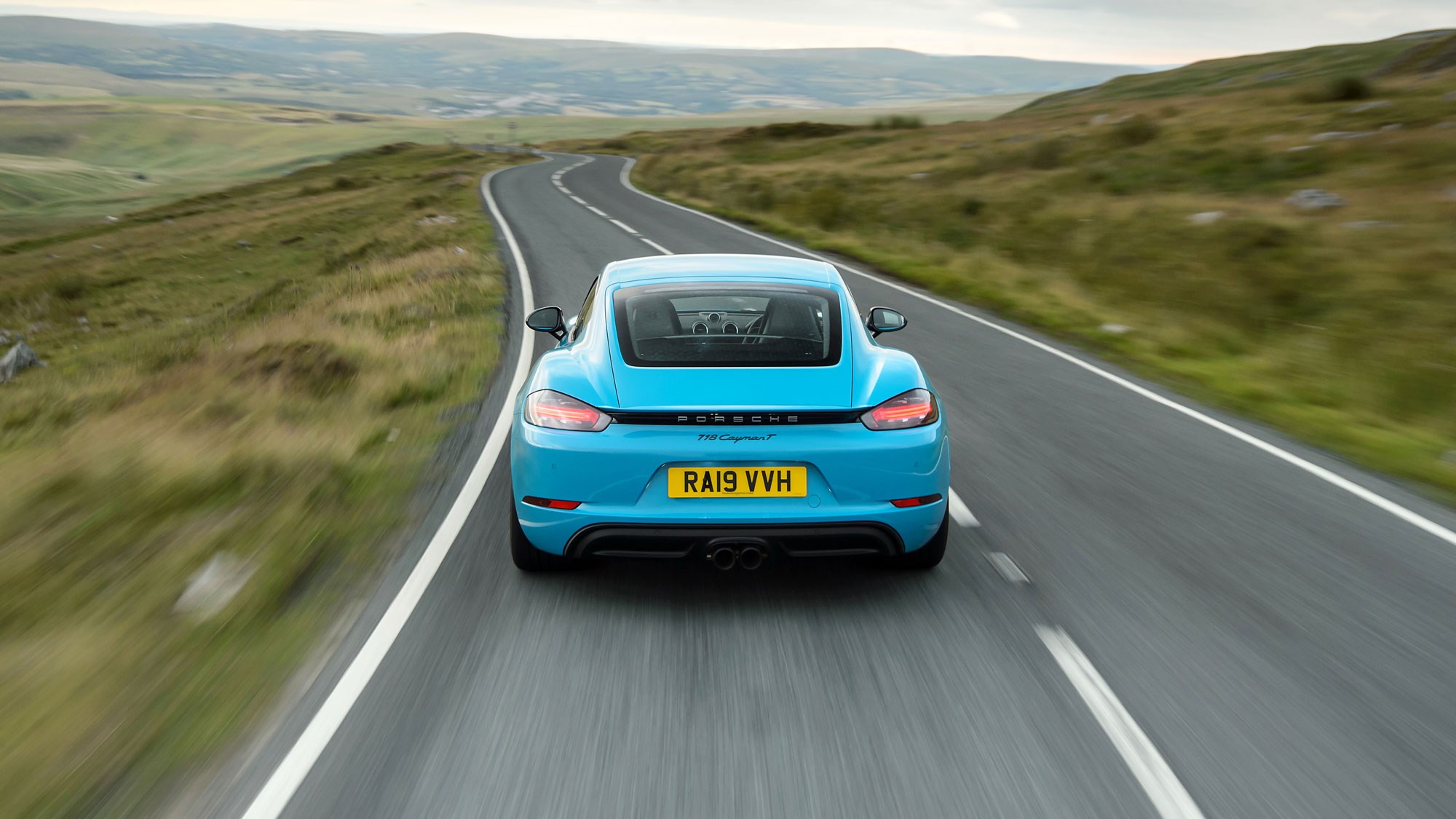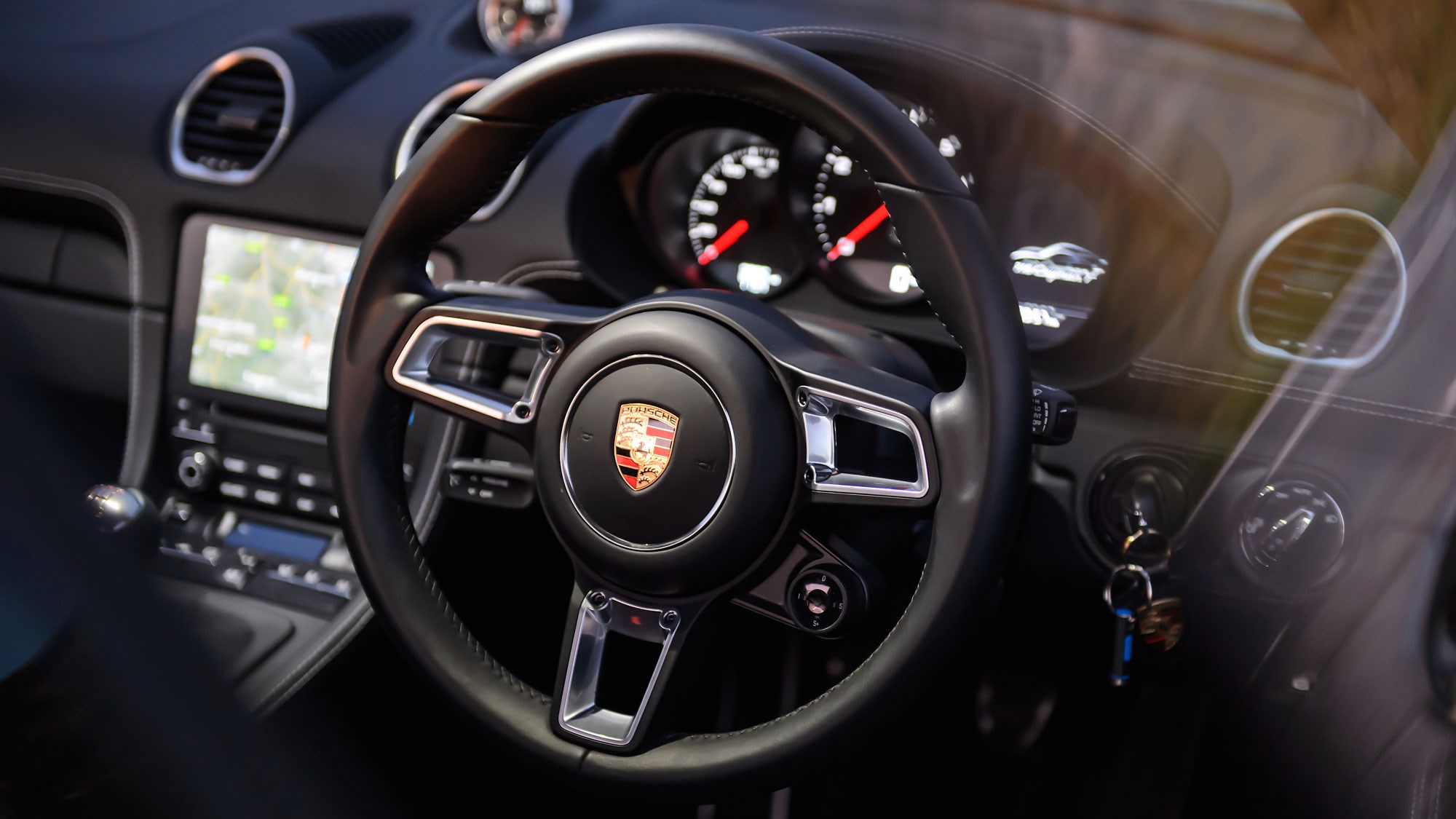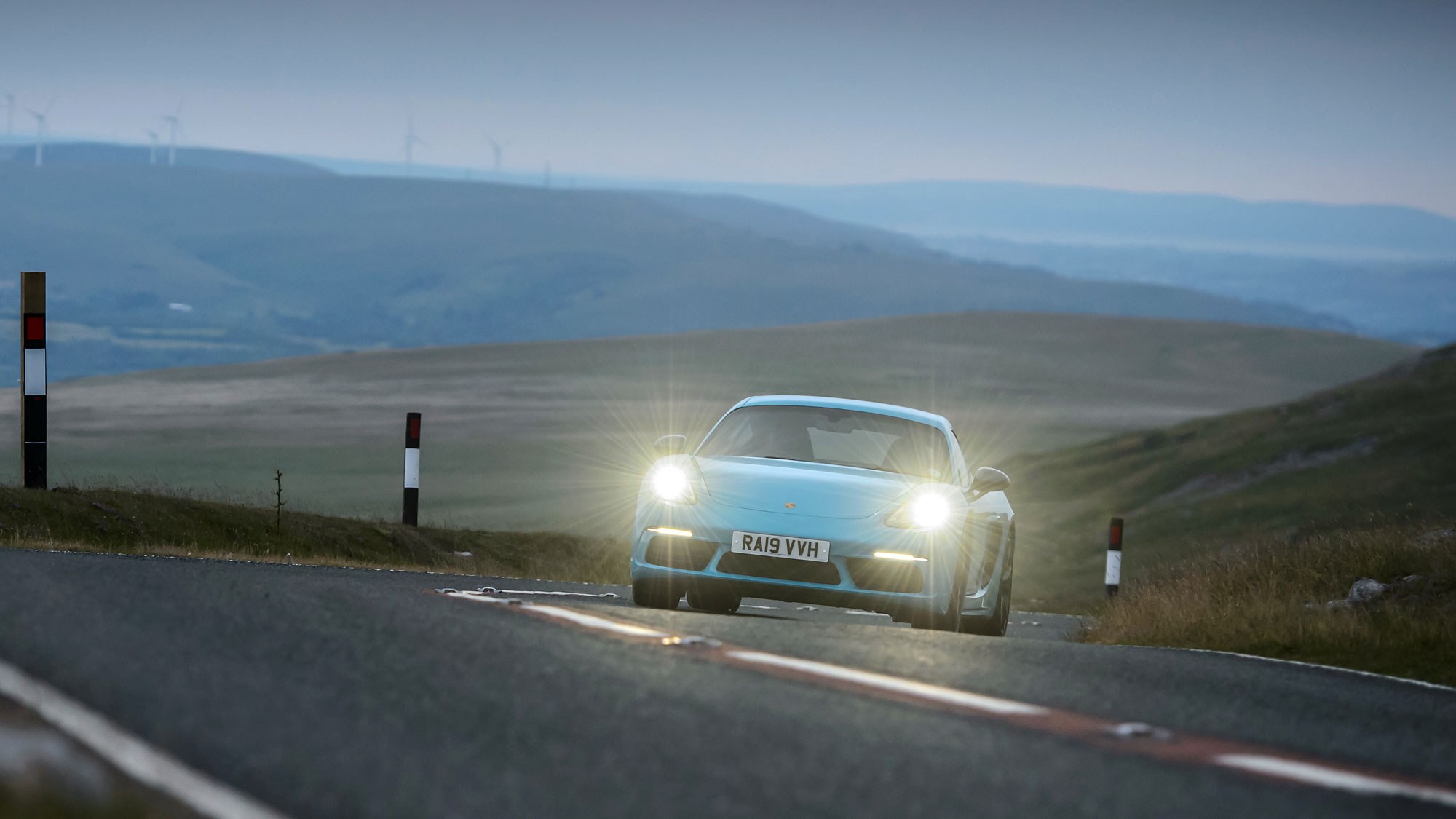► The T badge comes to the Cayman
► The purest 718 around
► But what’s the difference?
The last few years, the Porsche Cayman has become an increasingly strong rival to Porsche’s flagship 911. It may not be as fast, but Stuttgart’s mid-engined pocket rocket arguably offers a sweeter, even more balanced experience than the weightier, ever-so-slightly trickier 911.
But what’s the best 718 Cayman you can buy? Common wisdom suggests it’s the recently reviewed Cayman GT4, a Greatest Hits of 911 GT3 parts and naturally aspirated flat-six business – but it could also be this: the Cayman T. Basic and pure, it’s the stripped-down version of the standard car, without the go-faster bits a GT4 gives you.

So, is it a classic case of less is more, or does the Cayman T end up in a performance No Man’s land, partly due to the brilliance of the basic car? I’ll give you a clue, it’s the second one. Keep reading though.
What is this?
We’ve seen the T moniker on the 911 for a bit now, but, perhaps in a nod to its junior model’s importance – or increased profits – the T badge now comes to the 718 Cayman for the first time. The model we’re driving features the same 2.0-litre flat-four with 297bhp behind the occupants as the regular 718, but you also get some of the extra S version kit as standard.

The T badge gets you a mechanical rear diff’ and the Sport Chrono package, along with Sport-Tex seats, gram-shaving fabric door pulls, and a suspension lowered by 20mm. The press car we’re driving forgoes the PDK with launch control, and it skips over the optional-but-free infotainment delete option too – because there’s such a thing as too pure sometimes.
The whole lot costs you £51,145, with the lush Miami Blue finish, cruise control and leather-interior example we’re driving weighing in at £57,904.
How does the 718 Cayman T drive?
If the above already has you reaching for your cheque book, keep reading, because we could be about to save you a few Euros. Truth is: you already know how good the Cayman 718 T is to drive if you’ve already driven a regular 718 Cayman.
Developed free from the physical limitations of the 911’s fundamentally odd engine layout, the Cayman is one of the best drivers’ cars you can buy today – in any trim. With the engine in the right place, and 911 know-how everywhere else, the Cayman somehow offers fingertip feedback with bundles of confidence – a combo you’d think impossible.

The steering feels straight out of a 911, as do the three pedals at your feet – and in T spec, the short-throw gearchange adds to the magic. This is ‘5.1 seconds in the 0-62mph sprint fast’, not ‘911 fast’ but perfectly measured ratios and a supple change mean you’re probably too busy to notice.
Inside, the 718 Cayman T brings more of what you’d expect: those looking for something techy would say it’s starting to look long-in-the-tooth, but after hopping into the IMAX-screened 992-gen 911, the Cayman’s comparatively low-tech cabin is a breath of fresh air. This is a drivers’ car after all.
We like the standard infotainment, because it does just about enough without the need for Star Trek-style OLED panels about the place – yes I’m looking at you Taycan…
One other interesting addition are the fabric door handles which Stuttgart says shave off a few grams. They felt particularly pointless after ordering a double quarter-pounder from the Golden Arches, but the idea is cumulative lightening rather than individual losses.
What about the engine?
Yes, it’s a four-cylinder 2.0-litre turbo and we’ll get this out of the way now: it doesn’t sound like naturally-aspirated flat-six – because it’s not. Our test car features a Sports exhaust button, and it just gave the car a crunchier, louder tone, but really it just sounds like a four-cylinder, with a turbo to make things even more muted.
Expect something else and you’ll be disappointed, but know what to expect before you turn the key and the Cayman T sounds loud, and honest – there’s no i30 N like synthetic-parping on demand, here.

Treat the Cayman T’s engine as an important tool for exploiting the chassis though, and things get much less disappointing. One person’s flaw is another’s character, and the same applies to the Cayman’s block. Before 5000 revs it’s about as fast as a Toyota Yaris, but smash through that barrier and the Cayman T pulls and growls, threatening to break traction and really squeezing the most out of what may be Stuttgart’s finest chassis.
All this is aided by the Cayman’s minute ratios, its neat gear-changing and if you’re lazy: auto-blipping. Constantly keeping ’box and engine aligned in that 5k-upwards space is the sort of plate-spinning you want in a junior sports car.
Verdict: why?
We’ve done ‘what is the Cayman T,’ and ‘how does it drive,’ but the question that presents this car’s largest stumbling block is: ‘why?’ It’s a great car as you’d expect, but it doesn’t offer a great deal over the standard car, let alone the S. For a bit of extra cash you get features that add an extra sense of occasion, but that you can’t really feel when driving on the road. Still, if you’ve got the money, and you’re okay with the premium, go ahead.

And one more thing: we drove the Cayman after news of the model’s imminent electrification, and we handed the keys back with mixed feelings: in some ways the Cayman is the ultimate donor for electric power, and in others it’s the worst.
The Cayman’s brilliant chassis and functional engine remind us sound isn’t everything, and that torque valley before the 5000 mark makes us yearn for the instant, effortless, everywhere torque you find in EVs like the Taycan.
But are junior sports cars about effortless power, or searching, working and constantly reacting to feedback – like the way we contend with the Cayman’s turboey power signature? And will it even have gears? Those are questions for a few years’ time.
More Porsche reviews by CAR magazine